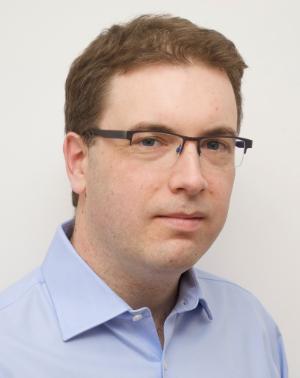World-first AI foundation model for eye care to supercharge global efforts to prevent blindness
Monday, 18 September, 2023
Share

Researchers at Moorfields Eye Hospital and UCL Institute of Ophthalmology (IoO) have developed an artificial intelligence (AI) system that has the potential to not only identify sight-threatening eye diseases but also predict general health, including heart attacks, stroke, and Parkinson’s disease.
RETFound, one of the first AI foundation models in healthcare, and the first in ophthalmology, was developed using millions of eye scans from the NHS. The research team are making the system open-source: freely available to use by any institution worldwide, to act as a cornerstone for global efforts to detect and treat blindness using AI. This work has been published in (opens in a new window)Nature recently.
Progress in AI continues to accelerate at a dizzying pace, with excitement being generated by the development of ‘foundation’ models such as ChatGPT. A foundation model describes a very large, complex AI system, trained on huge amounts of unlabelled data, which can be fine-tuned for a diverse range of subsequent tasks. RETFound consistently outperforms existing state-of-the-art AI systems across a range of complex clinical tasks, and even more importantly, it addresses a significant shortcoming of many current AI systems by working well in diverse populations, and in patients with rare disease.
Professor Pearse Keane, senior author and UCD School of Medicine 2002 graduate said:  “This is another big step towards using AI to reinvent the eye examination for the 21st century. We show several exemplar conditions where RETFound can be used, but it has the potential to be developed further for hundreds of other sight-threatening eye diseases that we haven’t yet explored.”
“This is another big step towards using AI to reinvent the eye examination for the 21st century. We show several exemplar conditions where RETFound can be used, but it has the potential to be developed further for hundreds of other sight-threatening eye diseases that we haven’t yet explored.”
In a world-first, RETFound has been trained on millions of retinal scans to create a model that can be adapted for potentially limitless uses.
One of the key challenges when developing AI models is the need for expert human labels, which are often expensive and time-consuming to acquire. As demonstrated in the paper, RETFound is able to match the performance of other AI systems whilst using as little as 10 percent of human labels in its dataset. This improvement in label efficiency is achieved by using an innovative self-supervising approach in which RETFound masks parts of an image, and then learns to predict the missing portions by itself.
RETFound could help improve diagnosis of some of the most debilitating eye diseases, including diabetic retinopathy and glaucoma, and predict systemic diseases such as Parkinson’s, stroke and heart failure. Identifying general health issues through the eyes is an emerging science called ‘oculomics’ – a term coined in 2020 by Professor Alastair Denniston, one of the paper’s co-authors. The eye is a ‘window’ into our overall health, providing a non-invasive look at the nervous system. Understanding the eye-body relationship is key to approaching complex diseases and the overall problems associated with ageing.
In addition, RETFound has shown that it is equally effective in detecting disease across diverse populations. Yukun Zhou, lead author, says: "By training RETFound with datasets representing the ethnical diversity of London, we have developed a valuable base for researchers worldwide to build their systems in healthcare applications such as ocular disease diagnosis and systemic disease prediction."
RETFound was trained with a curated dataset of 1.6 million images from Moorfields Eye Hospital. This used AI tools and infrastructure provided by INSIGHT, the NHS-led health data research hub for eye health based at Moorfields, and the world’s largest bioresource of ophthalmic data. The hub’s powerful computing and AI capabilities evolved from a 2016 research collaboration between Moorfields and DeepMind, now Google DeepMind.
The research team, led by Yukun Zhou and Pearse Keane of Moorfields and UCL IoO, have made the model freely available for use on (opens in a new window)GitHub. Researchers worldwide, such as Singapore and China, have been using RETFound in their novel investigation into eye diseases.
This project was a collaboration between NIHR Moorfields, UCLH and NIHR Birmingham Biomedical Research Centres and brought together the Computer Science and Engineering teams at UCL.
For further information, please contact (opens in a new window)moorfields.pressoffice@nhs.net
Professor Pearse Keane graduated from UCD Medicine in 2002 and studied a MSc in Physiology in 2004 and a MD in 2010.